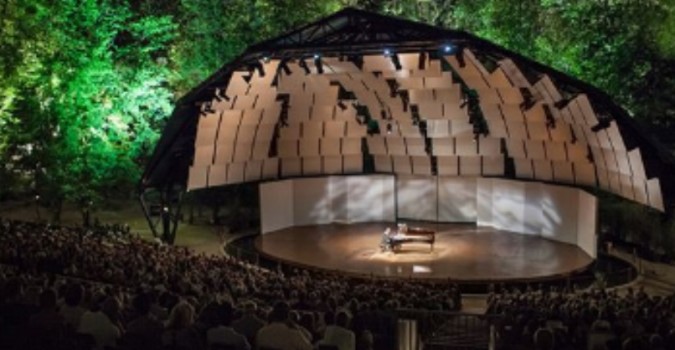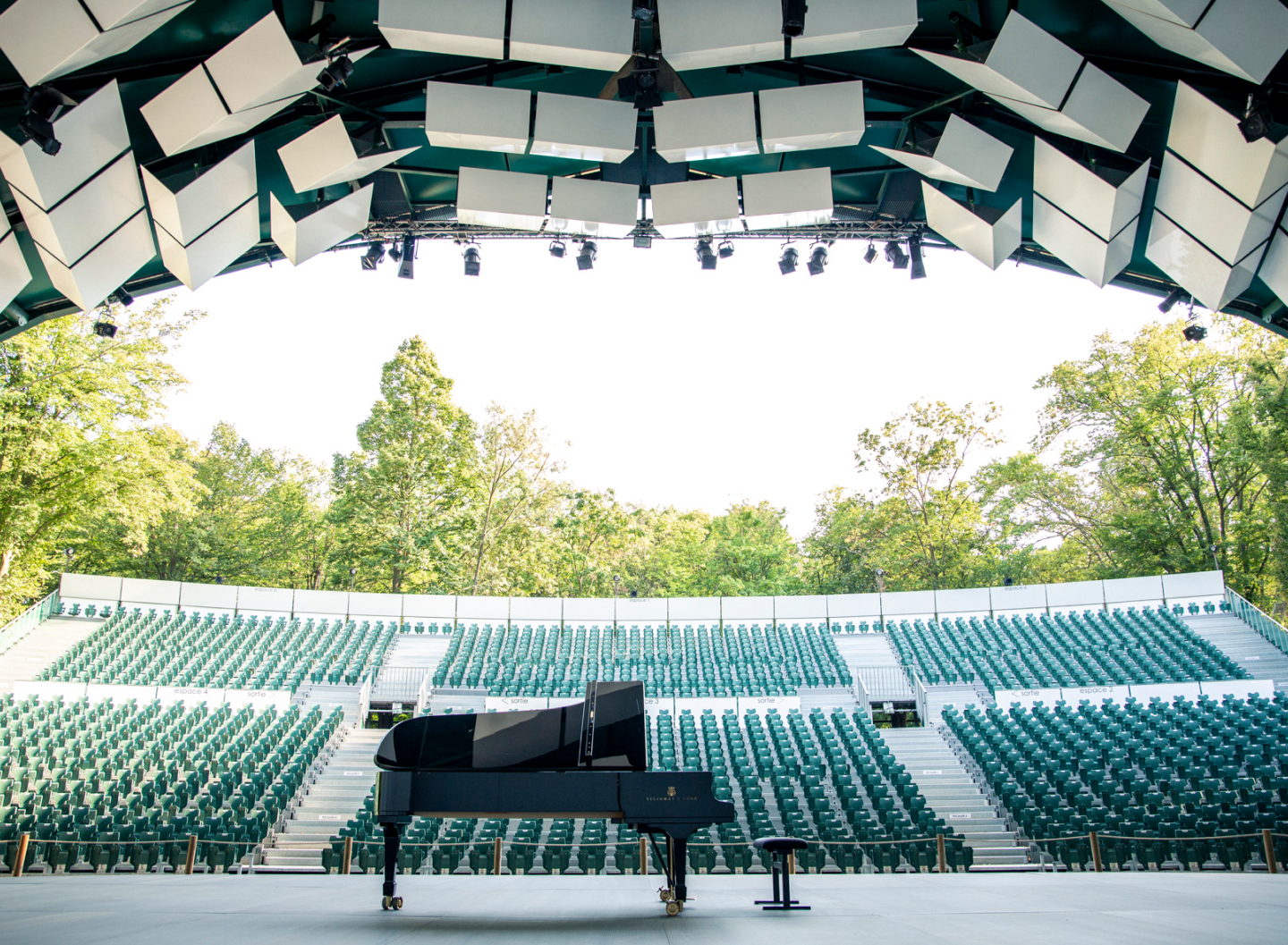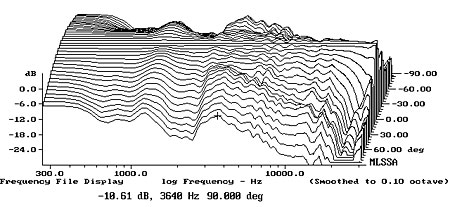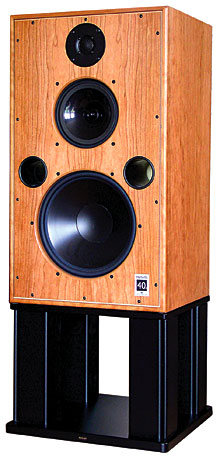Waxx, you have a conversation.I know from MA insiders that it's a OEM variation, somewhere between the 10.2 and the 10.3 (that were already close to each other). Mine is also using the much newer CHN110 btw and a MLTL, not a TQWT. But as both are variations of each other (both mass loaded TL's) the response is probally similar. I tuned my MLTL to 30Hz F3.
-
WANTED: Happy members who like to discuss audio and other topics related to our interest. Desire to learn and share knowledge of science required. There are many reviews of audio hardware and expert members to help answer your questions. Click here to have your audio equipment measured for free!
You are using an out of date browser. It may not display this or other websites correctly.
You should upgrade or use an alternative browser.
You should upgrade or use an alternative browser.
Which speakers are the Classical Music Pros using?
- Thread starter tuga
- Start date
Igor Kirkwood
Active Member
- Joined
- Jan 28, 2020
- Messages
- 109
- Likes
- 238
Am in the same situation as this Holland recording engineer ...Know in Holland a recording engineer who uses only a headphone for mastering through a HD600. Had the best results with that approach. One of his specialties are classical recordings in venues like Amsterdamse concert building which he does to.
Indeed, insofar as for example I record an organ, bringing my own speakers to control the sound recording is in my opinion absolute nonsense: The sacristy serving as a "cabin" sounding like a saucepan whatever the quality of the speakers used.
I know that this point of view is not shared by the majority of the members of Audio Science Revue, who refuse to admit that the quality of the listening room takes precedence over the intrinsic quality of the loudspeakers.
So to control my recordings I also use STAX (202) electrostatic headphones, despite their lack of putting the upper mids and treble forward.
I'm waiting for the purchase of French OK3D electrostatic headphones whose response curve is close to that of my Mastering installation.
Waxx
Major Contributor
The times i did assist in classical recordings, the broadcast company i worked for at that time used their own controlrooms build into their truck. All cabling came from the venue (concert halls or churches) to the truck that was parked outside as close as possible. The spaces inside the building were totally acousticly unfit said the engineer that i assisted. In the truck they used the at that time brand new K&H O300 (Precestor of the Neumann KH310) without sub. They did record for broadcast, but also as rental recording company for local (Belgian) ensembles as broadcastwork alone was very limited in quantity.Am in the same situation as this Holland recording engineer ...
Indeed, insofar as for example I record an organ, bringing my own speakers to control the sound recording is in my opinion absolute nonsense: The sacristy serving as a "cabin" sounding like a saucepan whatever the quality of the speakers used.
I know that this point of view is not shared by the majority of the members of Audio Science Revue, who refuse to admit that the quality of the listening room takes precedence over the intrinsic quality of the loudspeakers.
So to control my recordings I also use STAX (202) electrostatic headphones, despite their lack of putting the upper mids and treble forward.
I'm waiting for the purchase of French OK3D electrostatic headphones whose response curve is close to that of my Mastering installation.
Igor Kirkwood
Active Member
- Joined
- Jan 28, 2020
- Messages
- 109
- Likes
- 238
Of course Waxx a "controle room in a truck" can help in monitoring recordings.The times i did assist in classical recordings, the broadcast company i worked for at that time used their own controlrooms build into their truck.
In particular, the artistic director will undoubtedly be more comfortable in a truck than with a helmet on his head.
But alas, this does not replace a real quality listening room.
Neumann loudspeakers KH310 without subs do not reproduce the extreme bass, while even headphones will give information on the very low reverberations of the recording places, which simple speakers without serious subs will not give, ideally descending to 16 Hz.
The "controle room in the truck" on the other hand will give a natural stereophonic effect, which a helmet will not be able to give,
but a "controle room in the truck" with a volume of 100 m3 processed and a serious sub system, that does not exist, to my knowledge.
Last edited:
valve_integrator
Member
- Joined
- Jan 9, 2023
- Messages
- 87
- Likes
- 30
ASR dogma seems to be (inter alia) that recording engineers are deaf morons, and that ATCs and B&Ws are terrible speakers ...
YEPyet the recommended recordings threads are full of titles I know for a fact were mixed and mastered on ATCs and B&Ws. Go figure.
Says it all really B + W sound truly awful, which is why the vast majority of classical music recordings also sound truly dreadful.
YEP
Says it all really B + W sound truly awful, which is why the vast majority of classical music recordings also sound truly dreadful.
In what way do you find most classical recordings sound dreadful, and in what way do you think that dreadful sound is linked to the monitors being used for the recording and the post-production?
valve_integrator
Member
- Joined
- Jan 9, 2023
- Messages
- 87
- Likes
- 30
Because one of the prime considerations of doing live music recording on our end was to use "Prof Schneider's" advice Primus Strasbourg Uni.In what way do you find most classical recordings sound dreadful, and in what way do you think that dreadful sound is linked to the monitors being used for the recording and the post-production?
Some of the more obvious targeting:-
Ie. digital is much overrated, - lots of poor engineers /general sloppiness.
Research is not rewarded, and audio is the poor cousin of all things video.
eg. comparison with national radio output led us to understand even such large organisations as Austrian make crappy recording of even the most heavily media hyped concerts (eg. the NYDC in Vienna).
Veni ..vidi.....yuck!.
I blame current tonmeister training and heavy hyping of people like Tony Faulkner or all things German, leading to all the things Gerzon below hated...
Using headphones for mastering is stupid, -distorts all away from reality no matter how so called "good" they are.
The almost permanent inability to make a reproduction of live recordings possible with a valid monitoring ESPECIALLY in multi channel surround sound. (how many "pros" do you know can handle surround competently)?
Coincident technique such as some of the idea of the late Michael Gerzon clearly showing the now almost de-rigeur artificial/horrible results of multi miking,- eg. the PROMS.
Artificial effects such as convolution made to make a poor concert recording sound like Carnegie hall, compression - artefacts they are everywhere.
Singularly awful concert hall acoustic treatments- over hyped horrible sounding or sterile concert halls, eg Mariinski 2..Albert H, RFH, Barbican...too many to mention...
(by contrasts examples of an excellent sounding but nr Bankrupt hall - Fairfield Croydon,

or open air opera auditorium Orange or Le Festival International de Piano de La Roque d'Anthéron).

Want more?

Last edited:
Include film scoring, many include live sync recording of orchestras. Look at Skywalker, LA and London studios that specialize in that.
Because they have to mix ATMOS, they may compromise on speakers because they need so many. Translating to showing in movie theaters also results in movie theater speaker selection compromises for cost.
Because they have to mix ATMOS, they may compromise on speakers because they need so many. Translating to showing in movie theaters also results in movie theater speaker selection compromises for cost.
valve_integrator
Member
- Joined
- Jan 9, 2023
- Messages
- 87
- Likes
- 30
couldn't agree more!Include film scoring, many include live sync recording of orchestras.
Because they have to mix ATMOS, they may compromise on speakers because they need so many. ......... also results in movie theater speaker selection compromises for cost.
I made a live HD surround recording of Brahms requiem. (no video) as well as the Skatalites...if I remember.
The reproduction of it in any meaningful hi end shop was utter nonsense.
It took a purpose made system to render justice to it.
Once you heard a proper well made, coincident mic HD, live, sound surround version of a live concert you would just turn around to any real expensive so called "hi end" stereo and say it was flat sounding old crap...never mind the "locked up in a lousy bottle" sounding compressed studio stuff.
Because one of the prime considerations of doing live music recording on our end was to use "Prof Schneider's" advice Primus Strasbourg Uni.
Some of the more obvious targeting:-
Ie. digital is much overrated, - lots of poor engineers /general sloppiness.
Research is not rewarded, and audio is the poor cousin of all things video.
eg. comparison with national radio output led us to understand even such large organisations as Austrian make crappy recording of even the most heavily media hyped concerts (eg. the NYDC in Vienna).
Veni ..vidi.....yuck!.
I blame current tonmeister training and heavy hyping of people like Tony Faulkner or all things German, leading to all the things Gerzon below hated...
Using headphones for mastering is stupid, -distorts all away from reality no matter how so called "good" they are.
The almost permanent inability to make a reproduction of live recordings possible with a valid monitoring ESPECIALLY in multi channel surround sound. (how many "pros" do you know can handle surround competently)?
Coincident technique such as some of the idea of the late Michael Gerzon clearly showing the now almost de-rigeur artificial/horrible results of multi miking,- eg. the PROMS.
Artificial effects such as convolution made to make a poor concert recording sound like Carnegie hall, compression - artefacts they are everywhere.
Singularly awful concert hall acoustic treatments- over hyped horrible sounding or sterile concert halls, eg Mariinski 2..Albert H, RFH, Barbican...too many to mention...
(by contrasts examples of an excellent sounding but nr Bankrupt hall - Fairfield Croydon,

or open air opera auditorium Orange or Le Festival International de Piano de La Roque d'Anthéron).

Want more?

Thank you, that answered the first part of my question, but what about the second part?
Have you ever seen any clear patterns in the final quality of production that you could obviously link to the choice of studio monitors used for the recording or post-production process, and do you think those dreadful-sounding records would have been significantly better if another set of monitors were used for the production?
Personally, I don't think the choice of studio monitors will have a significant impact on the final music production as long as the engineer is used to the monitors. I think the final quality will depend much more on the decisions he made during the recording process and the bad or good choices he made during the post-production. The final outcome would probably be about the same even if he had used speakers that are seen as objectively a little bit better.
valve_integrator
Member
- Joined
- Jan 9, 2023
- Messages
- 87
- Likes
- 30
From what I can see - it really comes down to the level of the engineer.Thank you, that answered the first part of my question, but what about the second part?
Have you ever seen any clear patterns in the final quality of production ... do you think those dreadful-sounding records would have been significantly better if another set of monitors were used for the production?
Personally, I don't think the choice of studio monitors will have a significant impact on the final music production as long as the engineer is used to the monitors.
It was clear from tuition that there were many things an engineer couldn't hear.
It took a lot of persuading especially when I was subjected to double blind testing for the subject in question to realise what he was hearing was often being masked.
I have to mention my pet hatred - Compression.
See above..I think the final quality will depend much more on the decisions he made during the recording process and the bad or good choices he made during the post-production.
In my opinion the sound engineers were just plain incompetent - a prime example of that was my interraction with klassik radio Estonia in an important concert with Neemi Jaarvi.
They just insisted on using that (!"!£ing stupid decca triangle when it clearly was totally the wrong solution, then they had the nerve to come round to me to ask if I could hear the harpsichord when they couldn't!
We just used a transaural rejection pair in exactly the right spot - basically a single spot mic quad - elevated at exactly the right height and distance.
In fact like Gerzon I have a strong belief in the "exact right spot" for coincident mic positioning.
If the engineer can't hear this sort of thing then no monitor no matter how good is gonna help him.
The basic problem is the "clues" needed to know the recording that comes out of cans or out of those usually lousy placed speaker monitors is going to be an approximation to the real thing......ie..we have to extrapolate what it will sound like on a "proper system".
It's like working in the dark at least 2 steps away from simulation and imagining what the result will be.
With practice, good equipment and decent mics withh a decent team - you may be lucky to get it right.
I don't really believe in post production for Live performances, in fact many of the greatest I had pleasure to record were a simple pair (in my case some excellent but largely unknown UK made 1050 Calrecs, which had to be replaced out of my pocket after that A-hole Anderson, from Hebden Sound stole them off me).
I had no chance to edit or post produce (thank goodness) apart from me cheating in an open air concert when Ivry Gitlis broke a string in the middle of the 2nd movement of Brahms 3rd Vln Sonata op 108....and chopping the 2 bits together to make a whole (ouch) .
Of course when you have no time for set up, no time for live rehearsal and guess work then you have to follow your nose and make a good stab at it, especially when the singers are moving around all over the show... (Almost invariable for live opera!).
Again my experience was - cans are mostly crapshoots, genelec - no better in a cramped space and frankly no idea if the end result would be any good.
Hunches rule OK?!
The great satisfaction of course end up hearing the thing on a good system and saying - WOW, eg for La Boheme recently....then of course the singers had "off nights", the orchestra, well like randomly good cos they changed conductors too...
Get it? Monitors are just part of a long largely defective chain of events, which "it will be OK on the night" thrown in as a lucky draw!
* Eg, I have seen Gergiev make a complete and total tosser of himself with the shaky - palsy thing he calls conducting Sibelius.
The result was one of the worst things I have seen in the last 15yrs - then of course the audience - just like the audiophiles do for their brain dead overhyped audio crap, clapped and applauded like mad for a brain dead performance...
Last edited:
Very interesting to read about this, I think this exact thing happened when the Norwegian Broadcasting Corp was developing their in-house control room monitor, back in 1975-78. A very good attempt, a three way active. First the prototype measurement, aiming for flat performance. Not bad, exept the choice to roll of the low end at 60Hz or so.Of course you are right about using such speakers for editing and mixing. It assumes that all your listeners have similar (flawed) loudspeakers. This is the basis of the "circle of confusion" noted early in my books. From the beginning of audio a flat on axis curve was the target of rational minds, including the BBC. It was not always achieved because of technical limitations. These days it is increasingly normal to see flattish on-axis (direct sound) performance, sometimes impressively so. All of my research, starting about 50 years ago shows that in double blind tests, listening to a variety of commercial recordings, listeners clearly preferred flat direct sound = flat on-axis response. If one has a master tape that benefits from a 2 dB dip in the 1 to 3 kHz range (or indeed any other modification to frequency response) do it with an electronic equalizer and make it a part of the master recording. DON'T use monitor loudspeakers as equalizers! It is illogical. The monitor loudspeakers must be timbrally neutral. Recordings being mixed may not be neutral because of microphone choice or location with respect to the source.
The BBC goofed, but because of accumulated respect, it became "the word of god" to many. Pity.
They decided from "listening and production tests" to adjust the mid and highs, and called it "production standard"...

So, we had a national broadcaster which sounded very thin and lacking in low end. Never understood why, untill I found this document...
Seas & Xelex, later Adyton amps. NRK recorded a lot of classical music for radio and TV, they even employed their own symphony orchestra.
Dagfinn
You'll notice that Harbeth, the self-proclaimed carrier of the BBC tradition, does not have a "Gundry Dip" on axis, but there is a clear drop-off in dispersion width at the same frequency level, reducing reflected sound and achieving, perhaps, something similar.Very interesting to read about this, I think this exact thing happened when the Norwegian Broadcasting Corp was developing their in-house control room monitor, back in 1975-78. A very good attempt, a three way active. First the prototype measurement, aiming for flat performance. Not bad, exept the choice to roll of the low end at 60Hz or so.
View attachment 352605
They decided from "listening and production tests" to adjust the mid and highs, and called it "production standard"...
View attachment 352604
So, we had a national broadcaster which sounded very thin and lacking in low end. Never understood why, untill I found this document...
View attachment 352603
Seas & Xelex, later Adyton amps. NRK recorded a lot of classical music for radio and TV, they even employed their own symphony orchestra.
Dagfinn


Talking of Harbeth, they have just demoed a new active three way model with digital crossovers, aimed at the professional market, but also available to domestic users (though currently not everywhere). For now, the amplification is outboard. Class D/Hypex is standard, but other amplifiers can be used as well.
This is the question I have after seeing all the B&W in so many studios. Wouldn't it be natural to EQ them flat, specially in a studio setting?Of course there is no chance the B&W speakers were EQ’d to flat is there…?
- Joined
- Jan 15, 2020
- Messages
- 6,903
- Likes
- 16,927
With their currently quite large mid drivers, high crossover frequencies and wide radiating tweeters there would be too much sound power in the presence region if someone equalizes them flat on-axis, so actually a totally different crossover would be necessary for that. If interested in more details about such you can read the first link in my signature.This is the question I have after seeing all the B&W in so many studios. Wouldn't it be natural to EQ them flat, specially in a studio setting?
But an EQ based on a MMM-based measurement from the listening position, as I've seen in several pro audio videos, would still tame it significantly.With their currently quite large mid drivers, high crossover frequencies and wide radiating tweeters there would be too much sound power in the presence region if someone equalizes them flat on-axis, so actually a totally different crossover would be necessary for that. If interested in more details about such you can read the first link in my signature.
I still don’t understand why so many classical music studios use B&W when have such a BAT W frequency response?
You don't seem to be the only one concerned about the use of speakers from B&W in these studios, but can you or anyone else who has these concerns point to any music content that has been affected in a bad way by the use of the B&W speakers?
Do you have examples of recordings where you can say: “Listen to these albums how strange the tonality balance is, it’s so obvious it mirrors the problems in the B&W speakers frequency response”?
Keith_W
Major Contributor
You don't seem to be the only one concerned about the use of speakers from B&W in these studios, but can you or anyone else who has these concerns point to any music content that has been affected in a bad way by the use of the B&W speakers?
Do you have examples of recordings where you can say: “Listen to these albums how strange the tonality balance is, it’s so obvious it mirrors the problems in the B&W speakers frequency response”?
No, but I can think of a few labels where the tonality is quite far off. For example, nearly all of Deutsche Grammofon's catalog from the mid 80's and through the 90's. I never figured out why they all sounded so muddy. They were so bad that even their 70's recordings on analog sounded better! Things started to get better in the mid 00's and they don't sound like that any more, thank goodness.
Similar threads
- Replies
- 4
- Views
- 452
- Replies
- 47
- Views
- 4K
- Replies
- 117
- Views
- 24K
- Replies
- 283
- Views
- 21K
- Replies
- 1
- Views
- 808
